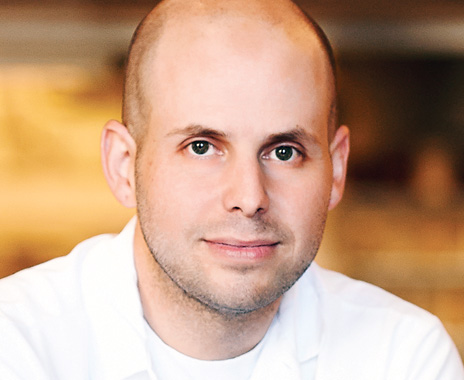Porano Pasta, the new Italian fast casual from James Beard–winning chef Gerard Craft (“Best Chef: Midwest” in 2015), opened in January in St. Louis, Missouri. The new concept lets customers build their own bowls using a variety of authentic Italian ingredients.
Guests walk down the line at Porano to customize their own bowls, selecting a base, sauce, protein, and toppings. Bases include hand-made pasta—both organic semolina and gluten-free—as well as Italian rice, organic farro, and a romaine and kale blend. There are 11 sauces, ranging from Pomodoro and Alfredo to a Pumpkin Seed and Lime Pesto and Garlic and Chili Oil. There are also 11 toppings (including cheeses, nuts, and vegetables) and a half dozen proteins.
We talked with Craft about his authentic Italian concept and why bowls were the right platform for its customizable menu.
Why did you choose to open an Italian fast casual?
The menu is pretty diverse when it comes to Italy, but the name is very specific. Porano is a place where I fell in love with Italian culture more than just the food. We sat down at the table with all these people we barely knew, and it was like we were family instantly. Once the food started coming and the wine started coming, we were all family and joking around and were good friends, even with a pretty severe language barrier. We wanted to bring that level of hospitality and warmth into a fast-food concept.
Why did you decide to use bowls as the primary menu platform?
It’s the easiest way to serve pasta and things of that nature, so it made a ton of sense right off the bat. But I liked eating that way, even in my house. I eat bowls of rice and vegetables on a regular basis, with some olive oil and chilies. It’s just the way I like to eat. It’s convenient to take with you and allows you to have a really diverse menu.
What are some outside-the-box flavors and ingredients you use?
One of our sauces we call Sunday Sugo, and it’s kind of loosely based around a style of sauce that comes out of Naples, Italy. They would simmer meat in a tomato sauce all day, and at night they would make a pasta and serve it with the sauce and then they would serve the meat as the second course. We’ve done a little twist on it, where we smoke the meat before we simmer it, and it gives it a little bit more of a Midwestern flavor. But it’s kind of smoky, unctuous from the pork, and bright from the tomatoes.
How do guests know which flavors work well together when they’re customizing?
We’ve been handing out cheat sheets with some of our staff favorite combinations. A lot of people talked to us about using kiosks for ordering, but I think it was really important for us to still have that one-on-one communication. When guests come down the line, they’re put at ease by our staff. You’re greeted with a smile, and you’re greeted with knowledgeable staff members who understand the menu, who eat the food every single day, and who know it inside out, because they also make the food every day. That builds trust with the guest, just as you would at our other restaurants with a really good server.
With bowls, you can eat one part at a time or mix ingredients together. What do you encourage?
If you want it more separate, we’ll make it that way, but ours is definitely more layered. Everything is kind of going on top of each other, and it goes the base first, then the sauce, the protein, and the toppings. I like things like herbs sprinkled over the top, crispy garlic, pickled vegetables, stuff like that. It is more of a completed bowl.
How does sourcing play into the menu?
We look at the food system and how messed up it is, and the pipeline used for ingredients within fast food, and I think that’s become something that’s really important for us: where we’re getting our ingredients. We need to make it the same as if we were getting ingredients for any one of our other restaurants. A lot of the local farms that we use for the pork and for the vegetables, it’s really important that we have all of that.
What plans do you have to evolve the menu over time?
Vegetables we’ll always change seasonally, no matter what. We’re sold on that. I think right now we’re in that phase where we’re not afraid to change something each day. I think there will be a lot of that as we start to figure out what works best and how it fits into our food chain. But I think we’ll always have a mix of static things and seasonal things.










